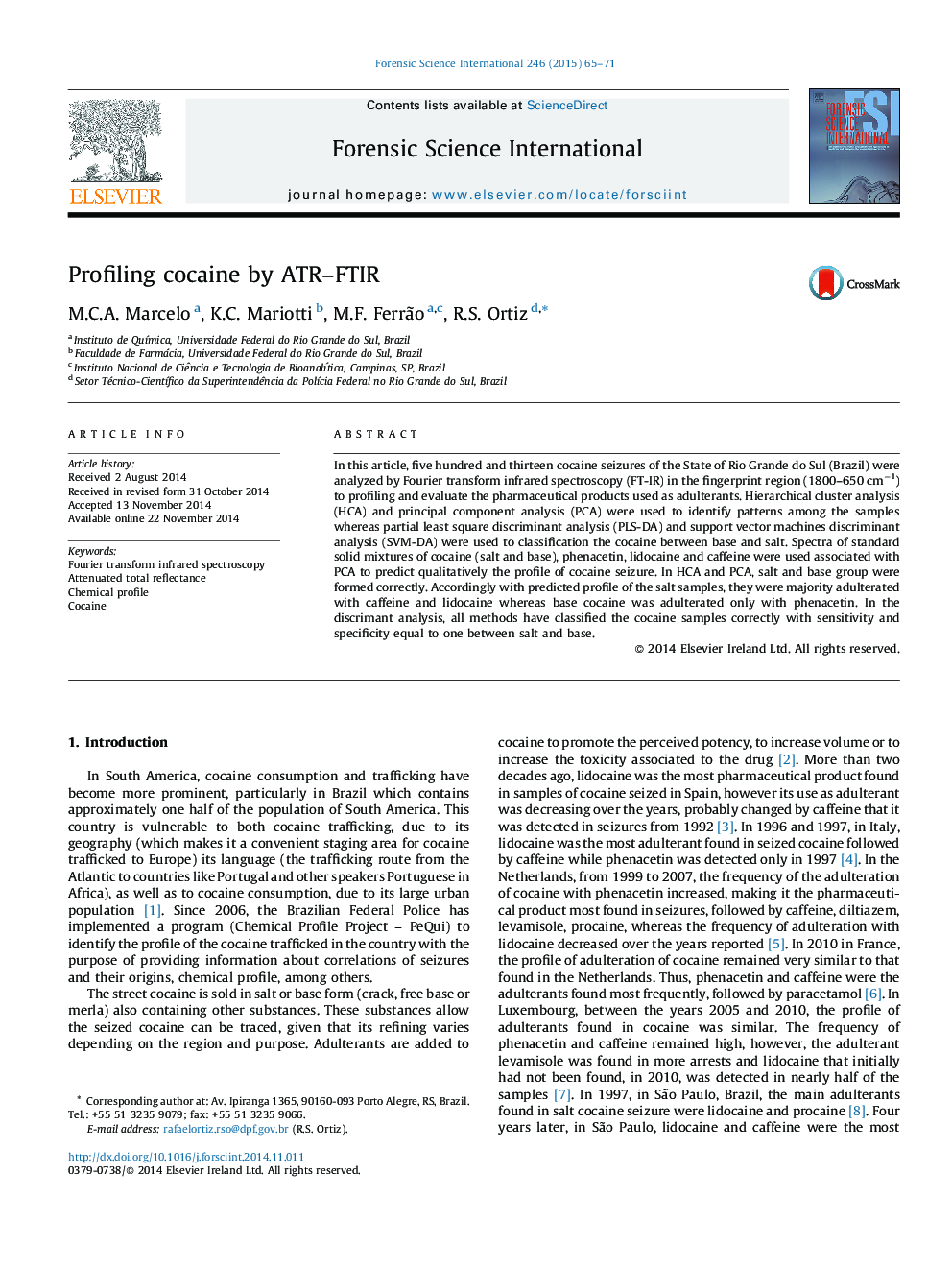| Article ID | Journal | Published Year | Pages | File Type |
|---|---|---|---|---|
| 95536 | Forensic Science International | 2015 | 7 Pages |
•513 seized cocaine samples were analyzed through FT-IR with chemometrics.•The seized cocaine separates between salt and base through HCA and PCA.•The adulterants were qualitatively predicted through PCA and mixture analysis.•Groups with samples from different seizures were formed by HCA.•PLS-DA and SVM-DA classified correctly all seized cocaine between salt and base.
In this article, five hundred and thirteen cocaine seizures of the State of Rio Grande do Sul (Brazil) were analyzed by Fourier transform infrared spectroscopy (FT-IR) in the fingerprint region (1800–650 cm−1) to profiling and evaluate the pharmaceutical products used as adulterants. Hierarchical cluster analysis (HCA) and principal component analysis (PCA) were used to identify patterns among the samples whereas partial least square discriminant analysis (PLS-DA) and support vector machines discriminant analysis (SVM-DA) were used to classification the cocaine between base and salt. Spectra of standard solid mixtures of cocaine (salt and base), phenacetin, lidocaine and caffeine were used associated with PCA to predict qualitatively the profile of cocaine seizure. In HCA and PCA, salt and base group were formed correctly. Accordingly with predicted profile of the salt samples, they were majority adulterated with caffeine and lidocaine whereas base cocaine was adulterated only with phenacetin. In the discrimant analysis, all methods have classified the cocaine samples correctly with sensitivity and specificity equal to one between salt and base.
